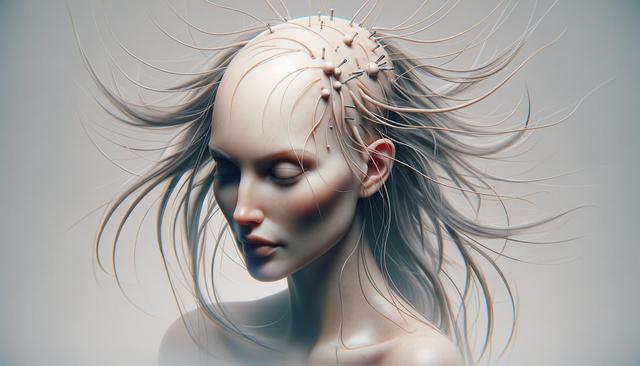Common Causes of Hair Loss
Hair loss can result from a wide range of factors, both internal and external. While it may seem sudden, it often develops over time and is influenced by genetics, lifestyle, and health conditions. One of the most common reasons is hereditary pattern baldness, which typically runs in families. Hormonal changes due to pregnancy, childbirth, menopause, or thyroid issues can also lead to temporary or long-term hair thinning. Additionally, medical treatments like chemotherapy, certain medications, and underlying health conditions such as autoimmune disorders may contribute to hair loss.
Environmental stressors and hair care routines also play a role. Excessive use of heat styling tools, harsh hair products, and frequent coloring or chemical treatments can damage hair follicles, leading to breakage and shedding. Nutritional deficiencies, particularly in iron, protein, and essential vitamins like B12 and D, are also linked to weakened hair growth. Managing these causes through proper diagnosis and lifestyle adjustments is often the first step in addressing hair loss.
Types of Hair Loss Conditions
Hair loss manifests in different forms, each with its unique characteristics and underlying causes. Understanding the type of hair loss is essential to determine the most effective approach to treatment. The most well-known type is androgenetic alopecia, commonly referred to as male or female pattern baldness. This form is usually gradual and follows a predictable pattern, such as a receding hairline or thinning at the crown.
Other types include:
- Telogen effluvium: Temporary shedding caused by stress, major surgery, or sudden weight loss.
- Alopecia areata: An autoimmune condition where the immune system attacks hair follicles, leading to patchy hair loss.
- Traction alopecia: Caused by hairstyles that pull tightly on the scalp, such as braids or ponytails.
- Scarring alopecia: A rare condition resulting in permanent hair loss due to inflammation that destroys hair follicles.
Identifying the specific type allows individuals and healthcare providers to tailor treatments that target the root cause of the problem.
Preventive Measures and Healthy Hair Habits
While not all hair loss is preventable, adopting healthy hair care practices can significantly reduce the risk of damage and promote stronger growth. One of the most effective strategies is minimizing physical stress to the scalp and hair. This includes avoiding tight hairstyles, limiting the use of heated styling tools, and choosing gentle shampoos and conditioners that are free from sulfates and harsh chemicals.
Additionally, nourishing the body with a balanced diet rich in proteins, healthy fats, and vitamins supports hair health. Essential nutrients that contribute to hair strength and resilience include:
- Biotin (Vitamin B7)
- Iron and zinc
- Vitamin D and E
- Omega-3 fatty acids
Managing stress through mindfulness techniques, regular exercise, and adequate sleep also helps regulate hormone levels that affect hair growth. When combined, these preventive actions create a foundation for maintaining healthy hair over time.
Treatment Options and When to Seek Help
There are several treatment options available for managing hair loss, ranging from topical applications to medical interventions. Over-the-counter treatments such as minoxidil have shown effectiveness for certain types of hair loss when used consistently. Prescription medications may also be recommended, depending on the diagnosis and severity of the condition.
In more advanced cases, dermatologists might suggest procedures like platelet-rich plasma (PRP) therapy, microneedling, or hair transplant surgery. These treatments aim to stimulate hair growth or restore hair in areas where regrowth is unlikely. Natural remedies and supplements are also popular, although their effectiveness can vary significantly.
It’s advisable to consult a healthcare provider if you experience sudden, patchy hair loss, or notice excessive shedding over an extended period. A professional diagnosis helps rule out underlying health issues and ensures that any treatment plan is safe and appropriate for your specific needs.
Emotional Impact and Coping Strategies
Hair loss can have a profound emotional impact, affecting self-esteem, social interactions, and overall mental health. For many, hair is closely tied to identity and appearance, so experiencing thinning or baldness can trigger feelings of anxiety and distress. It’s important to acknowledge these emotions and seek support when needed.
Coping strategies may include:
- Joining support groups or online forums to share experiences
- Exploring new hairstyles or wigs to regain a sense of control
- Seeking counseling or therapy for emotional support
- Practicing self-compassion and focusing on overall wellness
Addressing the emotional aspect of hair loss is just as crucial as treating the physical symptoms. By integrating emotional care with medical solutions, individuals can approach hair loss from a more holistic and empowered perspective.
Conclusion: Navigating Hair Loss with Knowledge and Support
Hair loss is a multifaceted issue that affects people of all ages and backgrounds. Understanding its causes, identifying the type, and taking proactive steps for care and treatment can make a significant difference. Whether you’re just beginning to notice thinning or have been managing hair loss for years, staying informed and seeking appropriate guidance is key. With a combination of healthy habits, professional support, and emotional resilience, it’s possible to navigate hair loss with confidence and clarity.




Leave a Reply